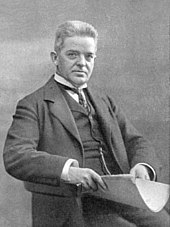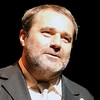
Bio
Carl Nielsen is indisputably the most influential figure in Danish musical history. His widespread fame is largely down to his writing complex and modern music for the concert hall as well as simple yet unforgettable songs for the Danish public, without compromising his own personal style. Nielsen was born into a poor family in rural Funen in 1865. During his childhood, he played in his father’s amateur orchestra and worked as a military musician in Odense. In 1884, he was accepted into the Royal Danish Academy of Music, where he studied with Niels W. Gade and J.P.E. Hartmann among others. After graduating from the Academy, Nielsen played violin in The Royal Danish Orchestra from 1889-1905. Later, he became concertmaster of the Orchestra, conducting several of his own works. Nielsen’s 1st Symphony was composed in 1892 and he was to write a total of six. Around the turn of the century, he wrote his two operas, Saul and David (1901) and Masquerade (1906) – the latter is widely recognized as the Danish "national opera”. His public breakthrough was also due to the success of Jens Vejmand ("Jens the Road-mender") (1907), a folk-like song, quite simple compared to his earlier lied-like songs. This anticipated the song style of his later years, which resulted from his composing of hymns and his famous collaboration with Thomas Laub. During the 1920s, Nielsen’s music started to receive international acclaim, a trend which has continued ever since. Towards the end of his life, Nielsen’s 60th birthday was celebrated nation-wide and he became director of the Royal Danish Academy of Music.
 Contact
Contact Basket
Basket My favorites
My favorites My account
My account






